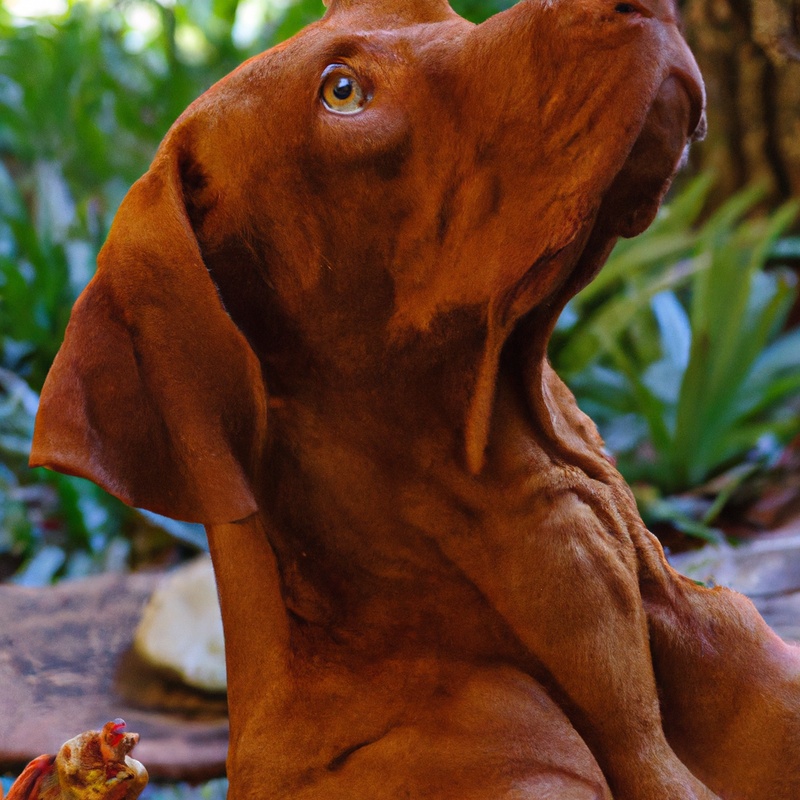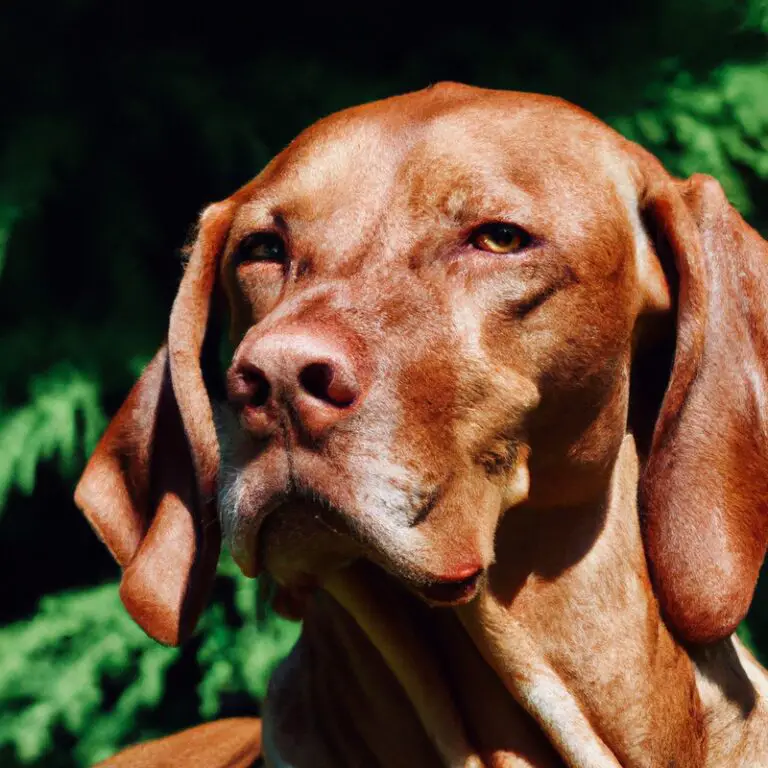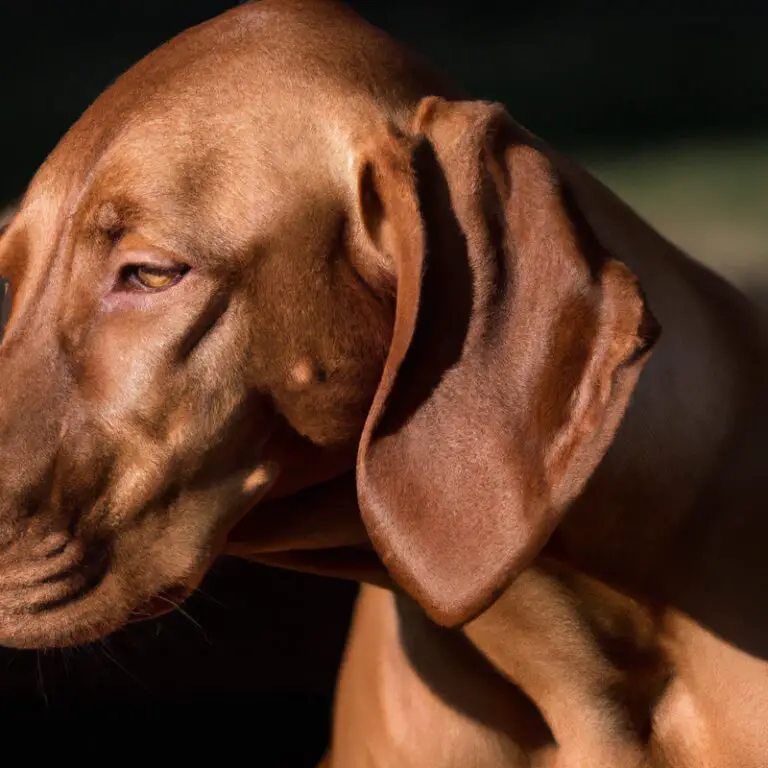How Do I Prevent Vizslas From Chasing After Small Animals?
Key Takeaways:
- Proper training and socialization can help prevent Vizslas from chasing small animals.
- Providing mental and physical stimulation can reduce a Vizsla’s instinct to chase prey.
- Using positive reinforcement techniques and distractions can redirect a Vizsla’s focus away from small animals.
- Leashing your Vizsla in areas with wildlife can prevent them from chasing after small animals.
Are your walks with your Vizsla turning into wild chases through the neighborhood?
Do they have an unstoppable urge to chase small animals?
If so, you’re not alone.
Vizslas are known for their hunting instincts that can kick into overdrive when they spot a squirrel or rabbit.
But fear not! As an expert in dog behavior and training, I’m here to share some effective methods for preventing your Vizsla from chasing after small animals.
In this article, we’ll explore the unique traits of Vizslas, the importance of curbing their chasing behavior, and practical training techniques to keep them focused on you.
Let’s dive in and ensure peaceful and enjoyable walks for both you and your furry friend.
| Methods to Prevent Vizslas from Chasing Small Animals |
|---|
| Training |
| Physical Barriers |
| Leash and Supervision |
| Distract with Toys |
| Socialization |
Understanding the Vizsla Breed
Brief overview of the Vizsla breed
The Vizsla breed is a beautiful and energetic dog known for its hunting abilities and loyal nature. They have a short coat that comes in various shades of rust and a sleek, muscular body.
Vizslas are highly intelligent, trainable, and excel in various canine sports like obedience and agility.
They are social creatures that thrive on human companionship and may suffer from separation anxiety if left alone for long periods. Regular exercise and mental stimulation are essential for keeping them happy and well-behaved.
With proper training and socialization, Vizslas make wonderful family pets.
Instinctual behaviors of Vizslas
Vizslas have strong instinctual behaviors that can manifest in certain ways.
Firstly, they are natural hunters and have a strong prey drive.
This means they may chase after small animals, such as squirrels or rabbits.
Secondly, Vizslas are energetic and require regular exercise to prevent boredom.
Without enough physical activity, they may be more prone to exhibiting undesirable behaviors.
Thirdly, they are known for their need for social interaction and can become anxious or destructive when left alone for long periods.
Therefore, it is important to provide them with mental stimulation and companionship.
Remember, understanding and addressing these instinctual behaviors is key to maintaining a harmonious relationship with your Vizsla.
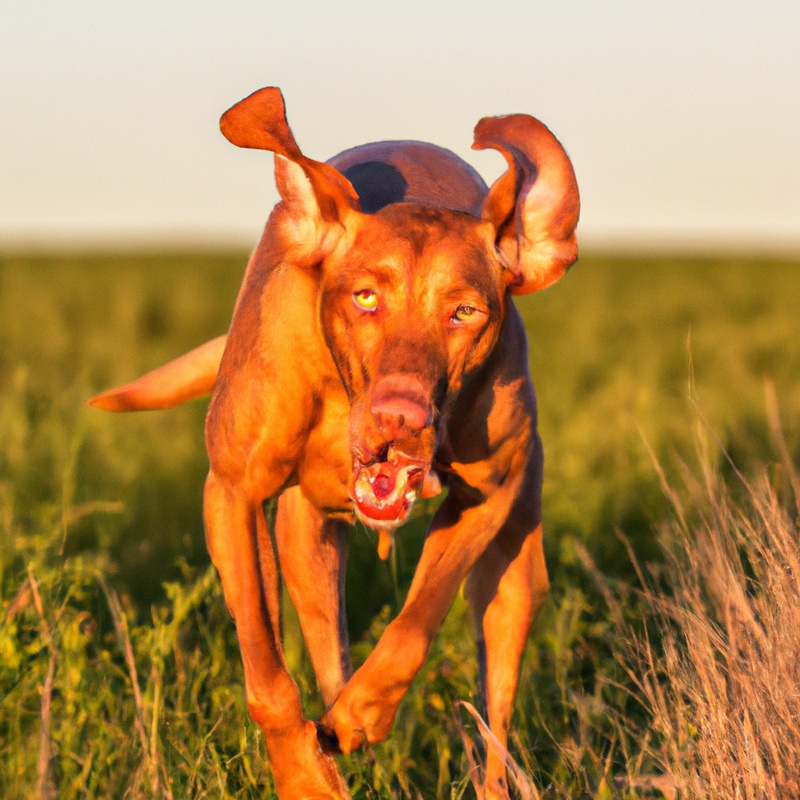
The Importance of Preventing Chasing Behavior
Potential dangers and consequences of chasing
Chasing can lead to dangerous situations and negative consequences for both your Vizsla and the animals they’re chasing.
The potential dangers include:
- Injury: Your Vizsla may get injured while chasing after small animals, especially if they are running onto roads or into rough terrain.
- Loss of Control: When in chase mode, dogs can become hyper-focused and may ignore commands, putting themselves and others in danger.
- Predatory Behavior: Chasing can stimulate a Vizsla’s natural prey drive, leading them to exhibit predatory behaviors that can be harmful to other animals, such as killing or injuring small pets or wildlife.
- Straying: Your Vizsla may chase an animal into unfamiliar territory, increasing the risk of getting lost or becoming disoriented.
- Legal Issues: Chasing animals can result in legal consequences, such as fines or penalties, if it occurs in protected areas or causes harm to livestock or wildlife.
It’s important to prevent chasing behavior through training, supervision, and appropriate environmental management to ensure the safety of your Vizsla and the well-being of other animals.
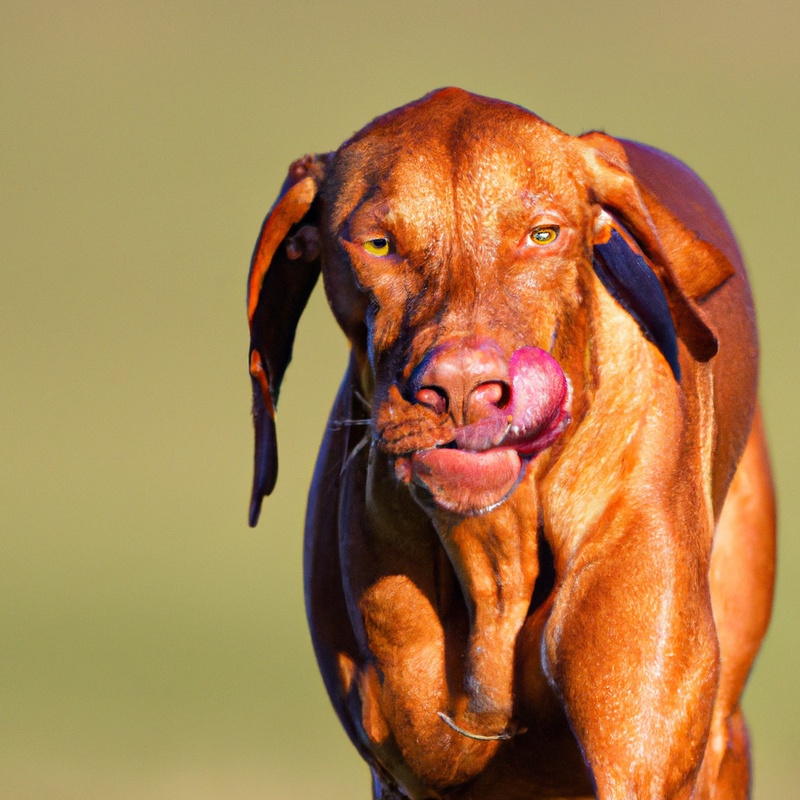
Benefits of preventing chasing behavior
Preventing chasing behavior in dogs, such as Vizslas, has several benefits. Firstly, it reduces the risk of injury to your dog.
Chasing small animals can lead to accidents, like getting hit by a car.
Secondly, it promotes better control and obedience. By teaching your dog to not chase, you establish yourself as the pack leader, which improves overall behavior.
Thirdly, it ensures the safety of other animals.
By preventing chasing, you protect small animals from potential harm. Remember, consistent training and positive reinforcement are key in achieving these benefits.

Training Techniques for Chasing Prevention
Consistency and positive reinforcement
Consistency and positive reinforcement are key when it comes to preventing Vizslas from chasing after small animals.
Dogs thrive on routine, so it’s important to set clear boundaries and stick to them.
Reward your Vizsla when they exhibit desired behavior, such as ignoring or staying calm around small animals, with treats, praise, or playtime.
Use positive reinforcement training techniques to reinforce the behavior you want to see.
Consistency in training and positive reinforcement will help discourage chasing instincts and keep your Vizsla focused on other activities.
Teaching the “leave it” command
Teaching your Vizsla the “leave it” command can be a valuable tool for preventing them from chasing after small animals. Here’s how you can do it:
- Start by showing your dog a treat in your hand and closing your hand into a fist.
- Say “leave it” in a firm but calm tone.
- Wait for your dog to stop trying to get the treat. It might take a few seconds, but be patient.
- Offer your dog a different treat from your other hand as a reward.
- Practice this exercise regularly, gradually increasing the difficulty by using more tempting items.
Remember, consistency is key. By reinforcing the “leave it” command, your Vizsla will learn to resist the temptation and focus on you instead.
Happy training!
Providing Sufficient Exercise and Mental Stimulation
Recommended exercise routines for Vizslas
Vizslas are an energetic breed and require regular exercise to keep them happy and healthy.
Here are some recommended exercise routines for Vizslas:
- Daily Walks: Take your Vizsla on at least one long walk every day. This will help burn off their excess energy and provide mental stimulation.
- Off-Leash Running: Vizslas enjoy running, so finding a safe, enclosed area where they can exercise off-leash is ideal. This allows them to stretch their legs and run at their own pace.
- Agility Training: Consider enrolling your Vizsla in agility classes. These activities challenge their physical and mental abilities and provide great exercise.
- Dog Sports: Vizslas excel in activities like dock diving, flyball, and lure coursing. Participating in these sports can help satisfy their natural instincts and keep them entertained.
- Puzzle Toys: Engage your Vizsla’s mind with puzzle toys or food-dispensing toys. This mental stimulation can tire them out just as much as physical exercise.
Remember that each Vizsla is unique, so it’s essential to adapt their exercise routines based on their age, health, and energy levels.
Always consult with your veterinarian before starting any new exercise program.
Interactive toys and games to mentally stimulate Vizslas
To mentally stimulate your Vizsla, try interactive toys and games like puzzle toys, treat-dispensing toys, and hide-and-seek games.
These toys provide mental challenges and engage your dog’s problem-solving skills.
Consider activities like scent training or teaching them new tricks to keep their minds sharp.
Interactive playtime with you, such as fetch or tug-of-war, is also stimulating for Vizslas.
Introducing new toys and rotating them regularly will prevent boredom and keep their minds engaged.
Effective Leash Training
Proper leash walking techniques
Proper leash walking techniques are essential for a successful and enjoyable walk with your Vizsla.
Here are some key tips to keep in mind:
- Start with a well-fitting collar or harness: It’s important to ensure that your Vizsla is comfortable and secure in their collar or harness, as this will affect their behavior on the leash.
- Use a sturdy leash: Choose a leash that is strong and durable to give you better control and stability during the walk.
- Hold the leash properly: Hold the leash with a loose grip, keeping your arm relaxed. Avoid gripping tightly, as this can increase tension and make your Vizsla more likely to pull.
- Use positive reinforcement: Reward your Vizsla with treats or praise when they walk calmly by your side. This will encourage them to repeat the behavior and reinforce their understanding of what you expect from them.
- Encourage proper walking position: Teach your Vizsla to walk beside you, slightly behind your leg. This will establish you as the leader and discourage them from pulling or lunging forward.
- Be consistent: Practice these techniques regularly and be patient. Consistency is key in helping your Vizsla understand the rules of leash walking. Stick to these techniques, and you’ll enjoy a more pleasant and controlled walking experience with your furry friend.
Using long lines for controlled practice
Using long lines for controlled practice is an effective way to prevent Vizslas from chasing small animals.
Start by attaching a long line (10 to 30 feet) to your dog’s harness or collar.
This allows you to maintain control while giving your Vizsla the freedom to move and explore.
Practice recall commands, such as “come” or “here,” and reward your dog with treats and praise when they respond appropriately.
Gradually increase the distance and distractions as your dog becomes more reliable.
Remember to always supervise your Vizsla when using a long line for their safety.
Recognizing Triggers and Managing Environments
Identifying small animal triggers for your Vizsla
Identifying small animal triggers for your Vizsla is important to prevent them from chasing. One way to do this is to pay attention to your Vizsla’s body language when they encounter small animals.
Look for signs like tense muscles, raised ears, or a strong focus on the animal.
It’s also helpful to keep an eye out for specific environmental triggers, such as squirrels or rabbits, that may set off your Vizsla’s hunting instincts.
Tips for managing outdoor environments
When managing outdoor environments to prevent Vizslas from chasing small animals, consider the following tips:
- Fenced Areas: Create a secure and tall fence to limit your Vizsla’s access to areas where small animals are present.
- Leash Walking: Keep your Vizsla on a leash during walks to maintain control and prevent them from chasing after small animals.
- Supervised Play: Always supervise your Vizsla when they are outside, especially in areas with wildlife or where small animals may be present.
- Training and Recall: Teach your Vizsla a reliable recall command to call them back when they start to chase. Consistent training and positive reinforcement are key.
- Distractions and Toys: Provide your Vizsla with plenty of mental and physical stimulation to redirect their focus away from small animals. Use toys, games, and treats to keep them engaged.
- Secure Gates and Doors: Ensure that gates and doors leading to outdoor areas are securely closed to prevent your Vizsla from escaping and chasing after small animals.
Remember, consistency and patience are essential when managing outdoor environments to prevent Vizslas from chasing small animals.
Seeking Professional Help
Consulting a professional dog trainer or behaviorist
Consulting a professional dog trainer or behaviorist is a great option if you’re struggling to prevent your Vizslas from chasing small animals. These experts have a deep understanding of dog behavior and can provide you with tailored advice and training techniques.
They can help you identify the root causes of the behavior, create a training plan, and work with you to implement effective strategies.
Additionally, they can teach you how to communicate effectively with your Vizslas and address any underlying issues that may be contributing to their hunting instincts. Seeking professional help can greatly improve your chances of successfully managing this behavior.
Exploring specialized training programs
Specialized training programs can be an effective way to prevent Vizslas from chasing after small animals.
Look for programs that focus specifically on prey drive control and recall training.
These programs will teach your dog to resist their hunting instincts and listen to your commands.
You can find specialized training programs through professional dog trainers or online courses.
Training sessions will involve exercises and techniques designed to redirect your Vizsla’s attention away from small animals and towards more appropriate behaviors.
With consistent training, you can help your Vizsla overcome their chasing instincts.
Frequently Asked Questions
Can all Vizslas be trained to stop chasing small animals?
Not all Vizslas can be trained to stop chasing small animals.
While some may respond well to training and be able to control their instincts, others may have a stronger prey drive that is difficult to overcome.
It is important to recognize that each Vizsla is an individual with its own unique temperament and characteristics.
If you are considering getting a Vizsla and want to prevent them from chasing small animals, it is important to consult with a professional dog trainer who can assess your specific dog’s behavior and provide tailored guidance and training techniques.
How long will it take to prevent chasing behavior in my Vizsla?
Preventing chasing behavior in your Vizsla can vary in terms of time and effectiveness.
It’s important to remember that every dog is unique and may respond differently to training.
However, with consistent training and positive reinforcement techniques, you can start seeing improvements within a few weeks.
The key is to be patient, consistent, and to work with a professional trainer if needed.
Remember, consistency is key, and over time, you can help your Vizsla develop better self-control and reduce their instinct to chase small animals.
Are there specific breeds that Vizslas are more likely to chase?
Vizslas have a strong prey drive, so they may be more likely to chase after small animals. However, it’s important to note that individual Vizslas can vary in their prey drive.
While there are no specific dog breeds that Vizslas are more likely to chase, it’s always a good idea to supervise them around small animals and provide proper training and socialization to minimize chasing behavior.
What should I do if my Vizsla has already injured a small animal?
If your Vizsla has injured a small animal, it’s important to take immediate action. First, ensure the safety of the injured animal and provide any necessary medical attention.
Next, separate your Vizsla from the injured animal to prevent further harm.
Consider seeking professional guidance from a veterinarian or animal behaviorist for advice on how to address your dog’s behavior and prevent future incidents. Additionally, providing mental and physical stimulation for your Vizsla can help redirect their energy and reduce their prey drive.
Final Verdict
It is crucial to understand the Vizsla breed and their instinctual behaviors in order to effectively prevent them from chasing after small animals.
The potential dangers and consequences of this behavior highlight the importance of proactive measures.
Consistency, positive reinforcement, and training techniques such as teaching the “leave it” command can be valuable tools.
Providing sufficient exercise and mental stimulation, effective leash training, and recognizing triggers are also essential.
Seeking professional help and being proactive in managing environments can lead to successful results.
Remember, prevention is key to ensuring the safety of your Vizsla and the small animals they encounter.

